Chris Howe reports on construction progress of a short section that will be key to providing links with East West Rail and other rail facilities.
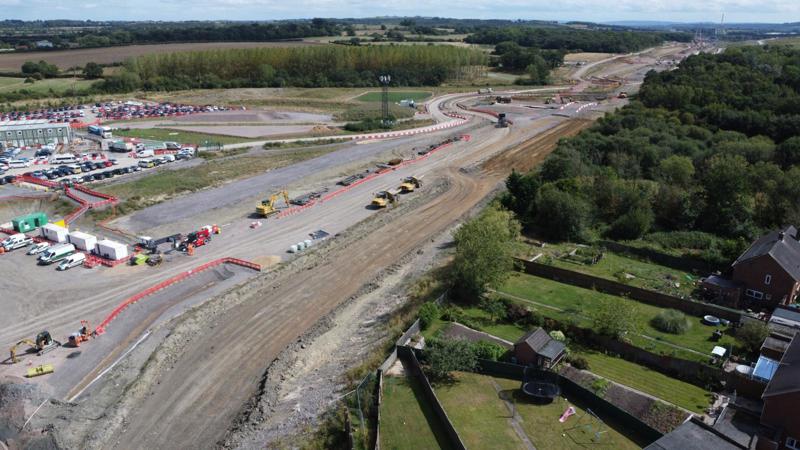
Chris Howe reports on construction progress of a short section that will be key to providing links with East West Rail and other rail facilities.

Construction of the 10km-long (6.2-mile) section of HS2 which passes through Calvert in Buckinghamshire appears as though it should be comparatively straightforward to build.
This section of railway from Qainton to Calvert passes through a rural area, using part of the Great Central alignment that was used until as recently as two years ago.
It was previously used to transport waste from London to the Greatmoor waste facility and landfill, and to transport 500,000 tonnes of aggregate which is being used during the construction of HS2.
However, construction of the section (known as CA) is not without its challenges. Nine bridges are being constructed for the HS2 alignment alone.
The interface with East West Rail (EWR) provided additional challenges, as has the connection to what will be the new Infrastructure Maintenance Depot (IMD), which will be built alongside the HS2 and EWR tracks.
The EKFB (Eiffage, Kier, Ferrovial Construction and BAM Nuttall) joint venture responsible for constructing this section is also having to make allowances for the provision of Network Rail tracks, as well as building a significant structure which will allow protected bat species to pass safely over the railway.
Starting in the south near the village of Quainton, the CA section will pass under a new road bridge which will replace Station Road to the west of the village.
The new bridge will take the road over the HS2 alignment to the north of an existing railway bridge. Another bridge will also be constructed immediately to the east for the Network Rail tracks from Aylesbury.
The existing road bridge over the Metropolitan and Great Central Joint Railway was filled in with foamed concrete at the start of the year, so that a weight limit imposed on the bridge could be lifted. This work was carried out by Network Rail, but was partly funded by HS2 Ltd.
The route north from this point to the EWR crossing is primarily being built for HS2, although the route and structures have been designed so that Network Rail could in future construct a link from EWR to Aylesbury.
Initially, however, it is possible that NR will opt only to build a single-track section from Quainton to the Greatmoor Energy from Waste facility (EfW). This will enable the reintroduction of freight services.
The railhead which served the facility closed in July 2021 to enable the HS2 works. Currently, waste is being transported from London to the facility and landfill by road.
The new railhead at Greatmoor will be on the eastern side of the HS2 tracks, whereas the waste facility is on the western side. A new overbridge, referred to as ‘GUN-28’, is therefore being constructed that will allow waste to be transported from the railhead across the rail link and HS2 tracks to the EfW facility.
Unless Network Rail decides otherwise, this will be the extent of the line running north from Aylesbury. However, the structures north of here, as far as the EWR crossing, will be designed to accommodate four tracks - two HS2 and two Network Rail, running in parallel.
This link bridge will primarily be used to connect the railhead to the waste facility, although part of the bridge (which is 42 metres wide) will also be used as a ‘green bridge’ and bridleway. It is hoped that the railhead will be re-established by 2028.
The next significant structure that is currently being constructed immediately after the railhead is a tunnel-like structure referred to as the ‘Sheephouse bat protection structure’. This will protect bats located in the nearby Sheephouse Wood from the passing trains.
Once complete, it will look almost like a porous tunnel portal, with concrete arch sections punctuated with steelwork that will resemble grating.
This 800-metre-long structure is also being constructed to accommodate four tracks, with a concrete wall separating the HS2 tracks from what could eventually be Network Rail tracks. The concrete for the walls is being poured in situ, while the concrete arches that will cover the tracks will be assembled out of pre-cast concrete sections.
There is a landfill (or more accurately a ‘landhill’) to the west of the tunnel, which runs very close to the HS2 tracks.
For this reason, 881 20-metre-deep piles are being sunk, atop which will be a capping beam. The piles and capping beam will be used to resist lateral movement of the landfill, which is several metres high. Part of the landfill is still in active use, although the section closest to the bat structure has been capped and will eventually be landscaped.
While the bat protection structure is primarily being built for HS2 tracks, Network Rail is providing a third of the funding, as it will be wide enough to accommodate tracks if NR chooses to build the Aylesbury-EWR link in future.
Continuing north, past the site of the old Calvert station, a combined road bridge and green bridge (with space mitigation plating), is currently under construction to replace School Hill overbridge. The existing bridge that crossed the Great Central Line has now been demolished.
The piles for the new bridge were sunk in the summer, and the beams for the deck are expected to be lifted into place in early 2025.
Beyond School Hill, approximately 1km to the north, the EWR tracks cross above the HS2 alignment. Work on this bridge was completed in November 2023, and the bridge was subsequently handed to EWR Co so that it could pour the final layer of ballast and install the tracks over the bridge.
Due to the nature of the interface between EWR and HS2, EKFB JV was responsible for a 3.5km (2.2-mile) section of the EWR alignment. This included building Addison Road bridge, which now crosses above the EWR and Gawcott Road, which in turn passes under the EWR tracks (having previously passed over the Varsity Line).
Addison Road bridge, while strictly speaking part of the EWR infrastructure, has been constructed to accommodate four tracks underneath. This is because of the rail connection from EWR to the HS2 IMD, which will allow infrastructure trains to enter the depot from East West Rail.
Within the space of less than half a kilometre, EKFB is building yet another road bridge, which is part of Gawcott Road but known as Perry Hill overbridge.
This bridge will take the road over the HS2 tracks, and is also wide enough to accommodate four tracks underneath. The additional tracks at this point will be for the connection from HS2 to the IMD. The depot will eventually sit to the north of the EWR tracks and east of HS2.
Although the structures on this 10km-long section may not be as complicated or sizeable as some of the more prominent viaducts, the CA section is proving no less challenging to construct - not least because EKFB is having to manage the closure of several local roads to minimise disruption for residents.
Additionally, the line passes through a flood plain. A great deal of work has therefore taken place to manage the water to ensure that the HS2 works do not cause flooding in neighbouring villages.
This has involved building a number of culverts which will run underneath the trackbed, as well as drainage on either side of sections of the route.
The impact of the recent heavy rain was all too apparent during a site visit in October, with the site for the IMD looking more like a series of small lakes which EKFB has been battling to ‘de-water’. Work will be carried out prior to construction of the IMD to mitigate the risk of flooding in future.
With winter now upon us, much of the earth moving has been wound down, with heavy plant such as articulated dump trucks parked up for the winter. Work will continue on the bridge structures, however, and EKFB is aiming to complete key bridges so that roads can reopen as soon as possible.
Perry Hill overbridge, for example, has been largely built, with work taking place to install precast concrete parapets and prepare the deck for construction of the road itself. EKFB is aiming to complete the bridge and realign the road over the new structure by the spring of next year.
In addition to the road bridges, EKFB is constructing two ‘green bridges’. Bridge SL13 will effectively be the northern portal of the bat mitigation structure, with a further green bridge to be constructed between SL13 and School Hill. These bridges will provide space for mitigation planting, as well as a safe route across the railway for wildlife and pedestrian access.
It’s clear that a great deal of work is being carried out to provide passive provision for an Aylesbury link in future, although there does appear to be a misconception regarding HS2 and the link, with claims that HS2 has made constructing the link difficult or impossible. In fact, the work being carried out by EKFB could make delivery of the link more likely.
Funding for a link must ultimately be provided by the Department for Transport, but as yet the new Labour government has not mentioned if the link will go ahead.
In the meantime, HS2 is providing passive provision so that the option to build the link is available if the government chooses to provide funding in future.
Chris Howe is a freelance transport journalist with special interest in transport civil engineering projects, and a prolific pro-rail campaigner.
Login to continue reading
Or register with RAIL to keep up-to-date with the latest news, insight and opinion.

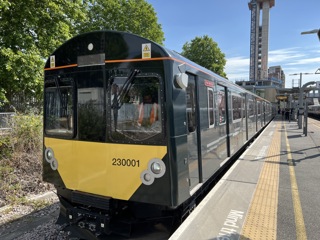
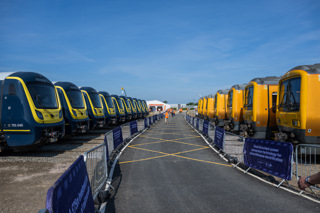
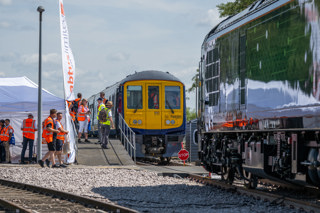
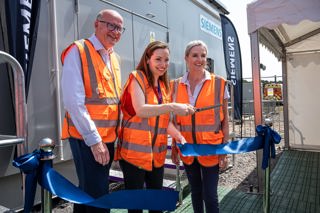
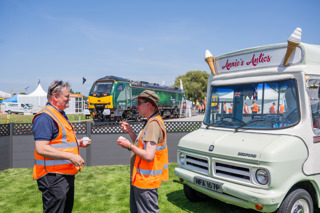











Login to comment
Comments
No comments have been made yet.